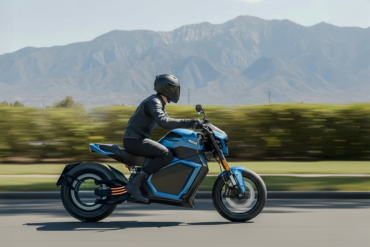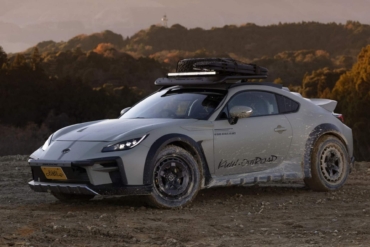Charging an electric car is more complicated than simply filling up your gas tank at the pump. Different charging levels, different charging rates, and different types of plugs. Don’t worry — we’re here to help, and to make sure that charging your electric vehicle is as painless to your brain as it is to your wallet.
We’ll cover charging speeds, and the differences between Level 1, Level 2, and Level 3. We’ll cover the different connectors, so you know what to plug into where. And, we’ll cover charging networks and apps so you can find the right place to plug in.
Let’s dive into the world of electric vehicle charging.
Check Your Levels

We’ll start with charging speed. There are three basic levels of EV charging speed, called Level 1, Level 2, and Level 3. It’s not exactly glamorous, but the names work.
Level 1 EV Charging
Level 1 is the basic option: charging from a standard wall plug at home. Every EV or Plug-in Hybrid Electric Vehicle (PHEV) comes with a Level 1 plug with a standard three-prong wall socket on one end and a plug to connect to your EV on the other.
Using standard 120V household power, Level 1 charging can add around 3 to 5 miles of range per hour. It’s convenient, if slow.
For comparison with the higher levels of charging, the Level 1 charging rate is around 1.2 kW. It’s your home’s wiring that is the ultimate limit of Level 1 charging speeds, and that dictates the capacity of the car’s charge system.
Level 2 EV Charging

Level 2 uses household AC power like Level 1, but it uses a 240V connection like an electric range or clothes dryer plug. While Level 1 chargers use a simple cable and wall plug, Level 2 chargers require a more complicated charging station.
Many Level 2 chargers need to be installed into your home; they can’t just be plugged in. They could even require a complete electrical service upgrade, involving the panel and power coming into your home. It’s complicated wiring, so it should be done by a qualified electrician.
More than just double the voltage, Level 2 charging lets you increase the current, or amperage, that can flow through the system. Using a NEMA 14-30 receptacle — it stands for National Electrical Manufacturers Association and is the fancy name for a standard dryer plug — you can charge at 7.2 kW. That’s six times faster than a Level 1 plug, delivering around 25 miles of range per hour.
Your Charging Mileage May Vary
This is where we note that all range mph figures are highly dependent. They vary based on the weather — mostly temperature, how efficient your EV is, and even the internal charging capacity of your EV.
Basic Level 2 charging is enough to fully charge most EVs overnight, with extra capacity to make sure you can preheat or cool your EV in the morning.
Level 2 240V charging allows up to 80 amps. That’s 19.2 kW, nearly three times faster than the more common 30A plug. It can give your EV more than 60 miles of range in an hour of charging.
But not all EVs and PHEVs can support 80A, 19.2kW charging. Most EVs actually can’t handle these speeds yet. The common max capacity for an EV is 7.6 kW, approximately enough for that common NEMA 14-30 plug.
That’s because it offers a good balance of charge speed and installation cost, plus the cost of the charging electronics in the car. More speed means more money.
How Many Level 2 Chargers Are There?
The U.S. Department of Energy lists over 59,000 Level 2 electric charging stations open to the public in the U.S. and Canada. Most of these public Level 2 charge points support a maximum of 7-12kW charging, and they’re usually cheap — free or a couple of dollars per hour.
Tesla Destination Charging
Tesla Destination Chargers are Level 2 EV chargers. They’re commonly installed at hotels and other places that are, well, destinations. Places you won’t mind a few hours on the charger.
Most EV owners will have a Level 2 charging station because they can give most EVs a full charge overnight. There are dozens of manufacturers of these systems that offer slightly different features but similar charge speeds.
Level 3 EV Charging

Level 1 and Level 2 are both AC charging methods. Alternating current is sent to the EV and is converted to the direct current the battery needs by electronics in the car. Level 3 does the DC conversion in the charging station. Having a larger (and more expensive) charge unit lets Level 3 move much more power more quickly.
Level 3 charging includes all DC fast charging. That means peak charging rates from as low as 24 kW all the way up to 350 kW. And 350kW charging is the highest currently offered, with only a few vehicles supporting the 800V internal wiring needed to charge so quickly.
Level 3 charging can top up your electric car’s battery in minutes rather than hours. A 24kW Level 3 charger can give your EV up to 100 miles of range in a single hour. Step that up to 350 kW, and your EV could add 100 miles of range in under 6 minutes.
How Fast Is Fast?

The 24kW and 350kW chargers are the two extremes. The 50kW chargers are much more common, with the highest-rate chargers that are commonly available offering 150kW charging.
It’s important to note that the charge figure — that 350kW number — is a maximum rate, not a minimum. So no matter what fast charge rate your EV supports, it can charge at a station that supports faster or slower charging. Your EV will tell the charging station what it can handle, and the station will adjust as needed.
Long trips are where you’ll want to use Level 3 DC fast charging. These high rates of charge can degrade the battery more quickly over the life of the EV; plus, it costs more than charging at home.
When to Stop Level 3 Charging
Most Level 3 charging should also be stopped at around 80% of the battery’s capacity. An EV battery can accept a higher charging rate when it is empty, and that rate gets lower as the battery gets “full.”
With most EVs, the maximum charge rate can fall to under 10 kW once the pack reaches 80%, and it will get even slower as it nears 100%. Because Level 3 charging is often billed by the minute, charging to 100% at these stations can get expensive.
It can also take hours to go from 80% to 100%, even though getting from 0% to 80% can take minutes. So charge to 80%, drive, and charge again as needed to cut your charge times and bills.
Where Can I Fast Charge?

The U.S. Department of Energy’s EV charging station location database shows over 9,000 Level 3 charging sites in the U.S. and Canada. However, most Level 3 sites have at least two, and sometimes five to 10, charging stations, meaning the number of actual plugs is much higher.
How much higher? Tesla operates 1,847 of its Level 3 stations (called Superchargers). Those sites have more than 20,000 individual charging points.
While Tesla labels all of its Level 3 sites as Supercharger sites, some charge at 72 kW, with others at 150 or 250 kW.
Cost of a Fast Charge
Some EV charge networks bill you for Level 3 charging by the kWh, just like how your home power bill is calculated. Others bill you by the minute, and which the charger uses is usually based on local rules. Common costs range from $0.25 to $0.60 per kWh or when time-based, around $15 per hour spent charging.
Some Level 3 chargers add a fee for the time when you’re plugged in but not charging, which is called idle time. The charge is to encourage you to finish charging and move your EV to leave a spot for the next vehicle. All EV chargers should let you know the cost before charging starts.
The Great Plug Debate
The early days of EVs saw every automaker working on its own plug design. Each one thought it knew best how to get electricity from plug to car. Fortunately, automakers put a stop to that in a hurry. Today, there are just a few main plug standards in use in North America.
The main EV charge plug in use today is the SAE J1772 plug. It’s used by everyone in North America except for Tesla. The five pins in the handle work for Level 1 and Level 2 charging. They allow power to pass through, and for the car and station to communicate.
In 2022 the North American Charging Standard (NACS) announced SAE J3400 — the Tesla charging plug — as the standard moving forward. Tesla vehicles have used this standard since 2012. Most major North American market automakers (Fisker, Ford, General Motors, Honda, Mercedes-Benz, Nissan, Polestar, Rivian, and Volvo) have announced that by 2025, all their vehicles will be equipped with a NACS charge port.
Faster Charging, Bigger Plugs

Level 3 charging demanded a more capable plug. Two shared designs surfaced, with Tesla continuing to use its proprietary plug.
CHAdeMO
CHAdeMO was the first plug standard. The name comes from a Japanese phrase and is an abbreviation of “move using charge.” This plug has four main pins, and most North American CHAdeMO plugs allow 50kW or 100kW charging speeds.
This plug is much less common, used by Nissan (for the Nissan Leaf) and Mitsubishi (for the i-MiEV and Outlander PHEV).
Combined Charging System
The most common current shared standard is the Combined Charging System, or CCS. These plugs add a second port directly below the SAE J1772 plug used for Level 1 and Level 2 charging. The extra two pins are for positive and negative DC current.
Every automaker other than Nissan, Mitsubishi, and Tesla in North America uses CCS. These charging cables can handle up to 350 kW. The cables are heavy and rigid and are usually short. You’ll need to park much closer to a Level 3 charger than most Level 1 and 2 options.
Tesla Charge Plug

Tesla uses a proprietary connector for its vehicles and Supercharger stations in North America. The plug means that only Tesla vehicles can use Tesla charging points — but the network is opening to other EVs now.
With the purchase of an adaptor, Tesla vehicles can use CCS, CHAdeMO, and J1772 charging points.
Are You on the Right Network?

Like gas stations, most Level 2 and Level 3 chargers are part of a charging network. A charging network operator is responsible for customer billing and maintenance of each station, but usually doesn’t own the site.
Major EV charge networks include ChargePoint, Electrify America, EVGo, Blink, and Flo. There are more than a dozen networks, some regional and some nationwide, but most offer CCS and CHAdeMO plugs at each site.
Most networks need an app to let you start charging your EV and pay for the charging session. Because there are so many networks, meaning users need to keep a balance on multiple apps, some networks are now sharing. ChargePoint and Electrify America, for example, now allow “roaming.” Users of one network can charge on the other without the need for two apps.
Some charging networks and stations let you tap a credit card to start charging and pay, but the stations are hard to find. Others, like Flo and ChargePoint, can send you a special chip-enabled card that can start a charging session.
Plug-and-Play Billing

Another new service called Plug and Charge makes starting a charging session even easier. Your payment information is stored in your car, which then communicates to the charge station.
Instead of plugging in and starting a session with an app, you plug in and your EV does the rest. Plug and Charge is becoming available on more vehicles and networks but is still not widespread.
Because there are so many charging networks, apps can also help you find the closest charger. Apps like PlugShare and Chargeway give you user reviews and comments so you can make sure a charger has been recently used, see its status (operational or not, occupied or not), and even find out if there’s a coffee place or a bathroom nearby.
Some EVs have charge location data built-in, a very handy feature that lets you incorporate charging into your navigation directions. But having access to this info in your hands away from the car is still useful.
EV Charging Explained
EV charging is still not quite as simple as filling up with gas, but it shouldn’t be intimidating. It is getting easier and easier as standards are implemented, infrastructure is built, and technology in the vehicles, batteries, and chargers improve at a rapid rate.
EV charging is when you connect your electric vehicle (EV) to an electric vehicle charging station in order to add electricity to its battery pack, which provides the vehicle with more operating range.
Charging an EV at home can be very inexpensive (the average residential electricity rate in the U.S. is about 23 cents per kWh). Public charging stations can range from free to very expensive. Most public chargers will charge by the kilowatt hour or for the amount of time you’re plugged in.
You must find an EV charger with a plug that works with your vehicle, or have an adaptor to make it compatible. Standards are being put in place now that will likely lead to a not-so-distant future where EVs can charge at any charging station.
Charging times vary greatly because of EV battery pack size, vehicle charging rates, and the type of charger being used. Currently, charging a vehicle from empty to full can take from about 15 minutes on a fast charger to upward of 50 hours on a 120V home charger.







